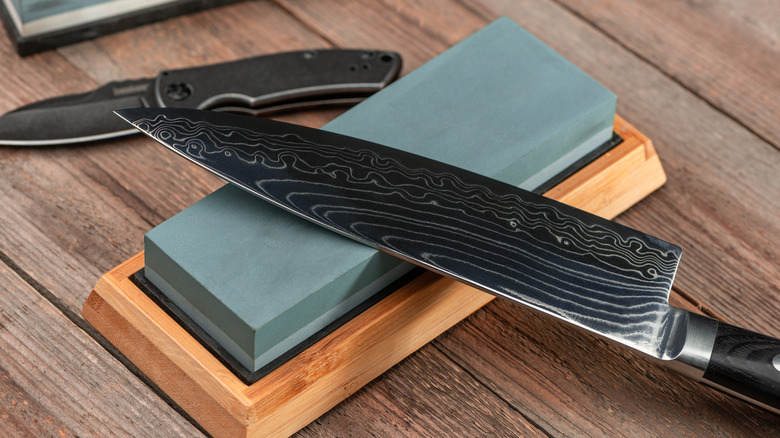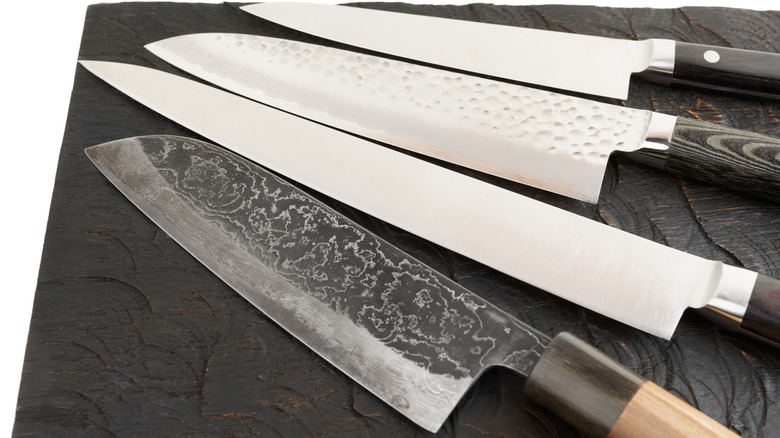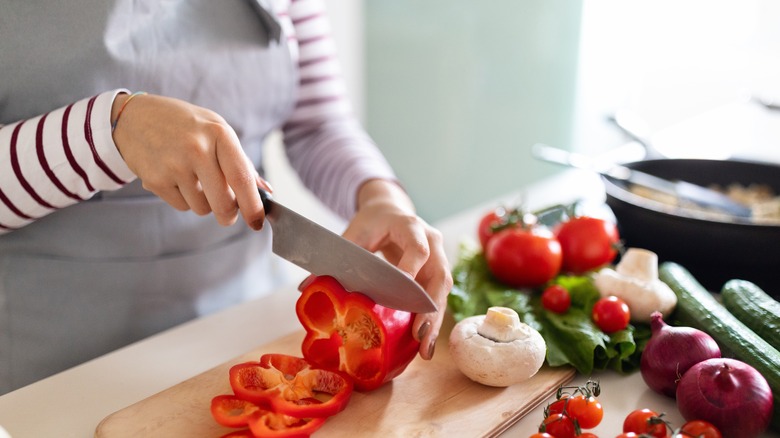The One Knife Home Cooks Should Splurge On According To A Chef
A good quality knife is a must-have in any home cook's toolbox. For those looking to outfit their kitchen on the cheap or cut down on unnecessary purchases, it can be tempting to think that any basic blade will suffice. But the immediate difference a high-quality, chef-caliber knife makes is clear and undeniable.
Take it from Bar Miller's James Dumapit. The executive chef offered his professional advice on the one investment home cooks should make when looking to level up their knife drawer in an exclusive interview with Chowhound. "If you splurge on one knife, make it a high-quality gyuto, the Japanese version of the Western Chef's knife," says Dumapit, who helms the eight-seat omakase spot from the same team behind sustainable sushi destination Rosella. "For my money, they're the best multipurpose knives and come in a range of metals," he shares.
A gyuto knife may seem like an elevated choice for novices, but Dumapit emphasizes that it has exactly what he's looking for in a blade and is ideal even for someone just looking to expand their collection. "It sharpens easily, holds a good edge, cuts like a laser, and is beautiful to look at. It's also an easy one for a beginner."
How a gyuto differs from a European chef's knife
The knives you could fill a drawer with are vast — from serrated tomato knives to boning knives and specialty blades made for meat. It's worth knowing when and why we use each type for clean cuts, but the average home cook can do a lot with just one good quality workhorse knife — it's a life-changing kitchen hack. Chef James Dumapit recommends a Japanese style designed to tackle a wide range of kitchen tasks and materials, which can also be used with different techniques.
Gyuto (which translates to "cow sword" or "beef knife" ) knives are designed with a slight curvature to slice through meat easily. But really, they can do it all — from mincing garlic to chopping proteins and cubing potatoes. As with European chef's knives, Japanese gyutos are designed to be multipurpose and highly versatile, but they tend to have lighter, finer blades for super clean cuts. They're also typically forged from harder steel than chef's knives, meaning the upkeep is minimal, and have a straighter shape and less severe endpoint, making them virtually effortless to handle. With an investment in a good gyuto, as Dumapit recommends, you can cut down on prep time, and your dicing, chopping, and slicing will be cleaner.
Types and prices vary, but the investment can last forever
As with European chef's knives, the options for gyutos range in size, style, expense, and aesthetics. But no matter which style of gyuto you grab, it will be highly functional and easy on the eyes to boot. Plan to spend somewhere in the neighborhood of $100 on the low end and up to $250 or more, depending on the brand you purchase, where you buy from, and the size of the blade.
For a good starter option, Chef James Dumapit recommends the same one he has, "made by a company called Nenox," and notes, "I've had it for more than 10 years." No fancy equipment or upkeep is required, but you should wash your knives with a sponge and soapy water and keep them well-dried. (We've all left dishes to soak overnight, but you won't want to do this with your shiny new blade.) You'll also want to sharpen your gyuto knife as a chef would from time to time. With proper care, the blade can last virtually a lifetime, making cooking and prep work a breeze for the long haul.


